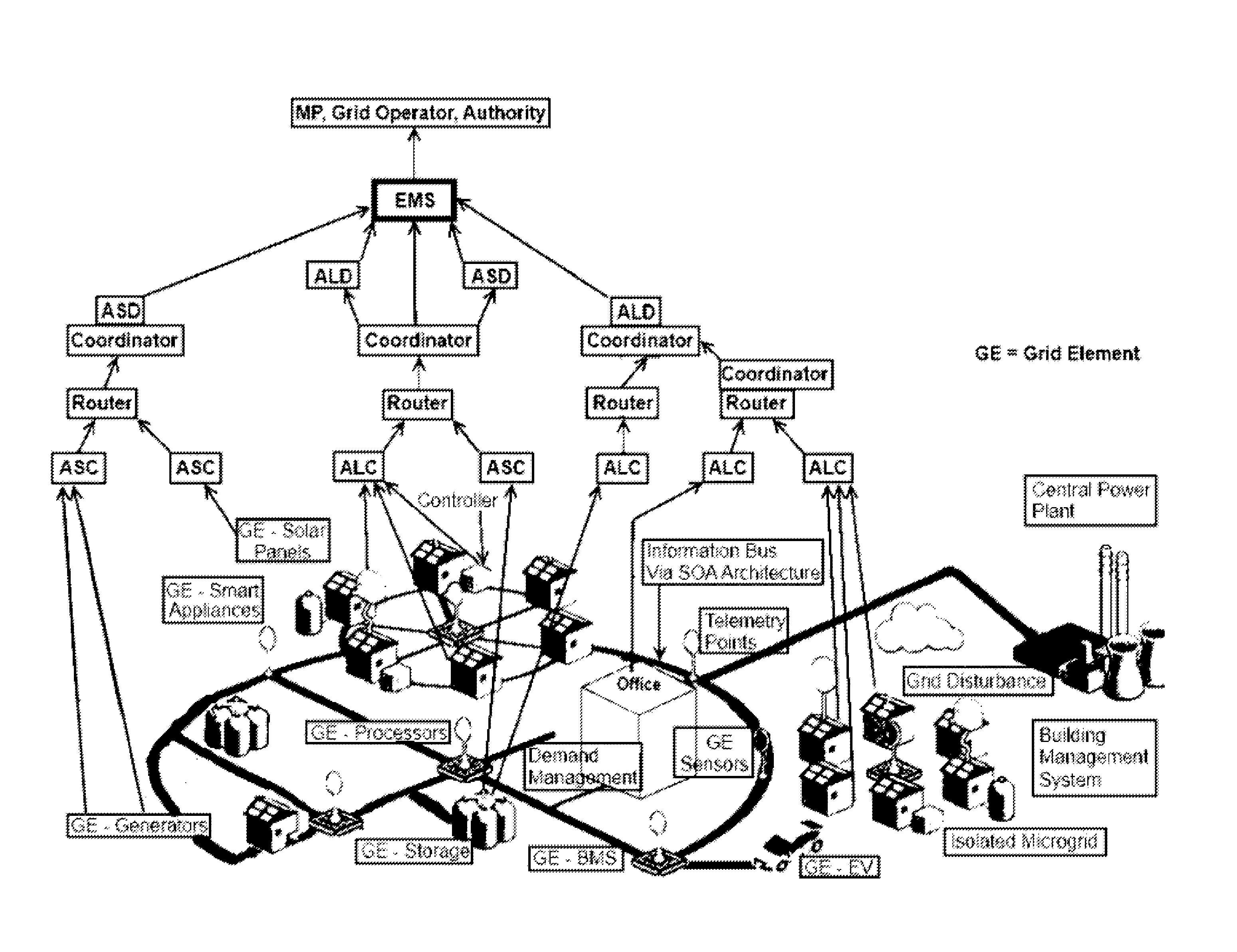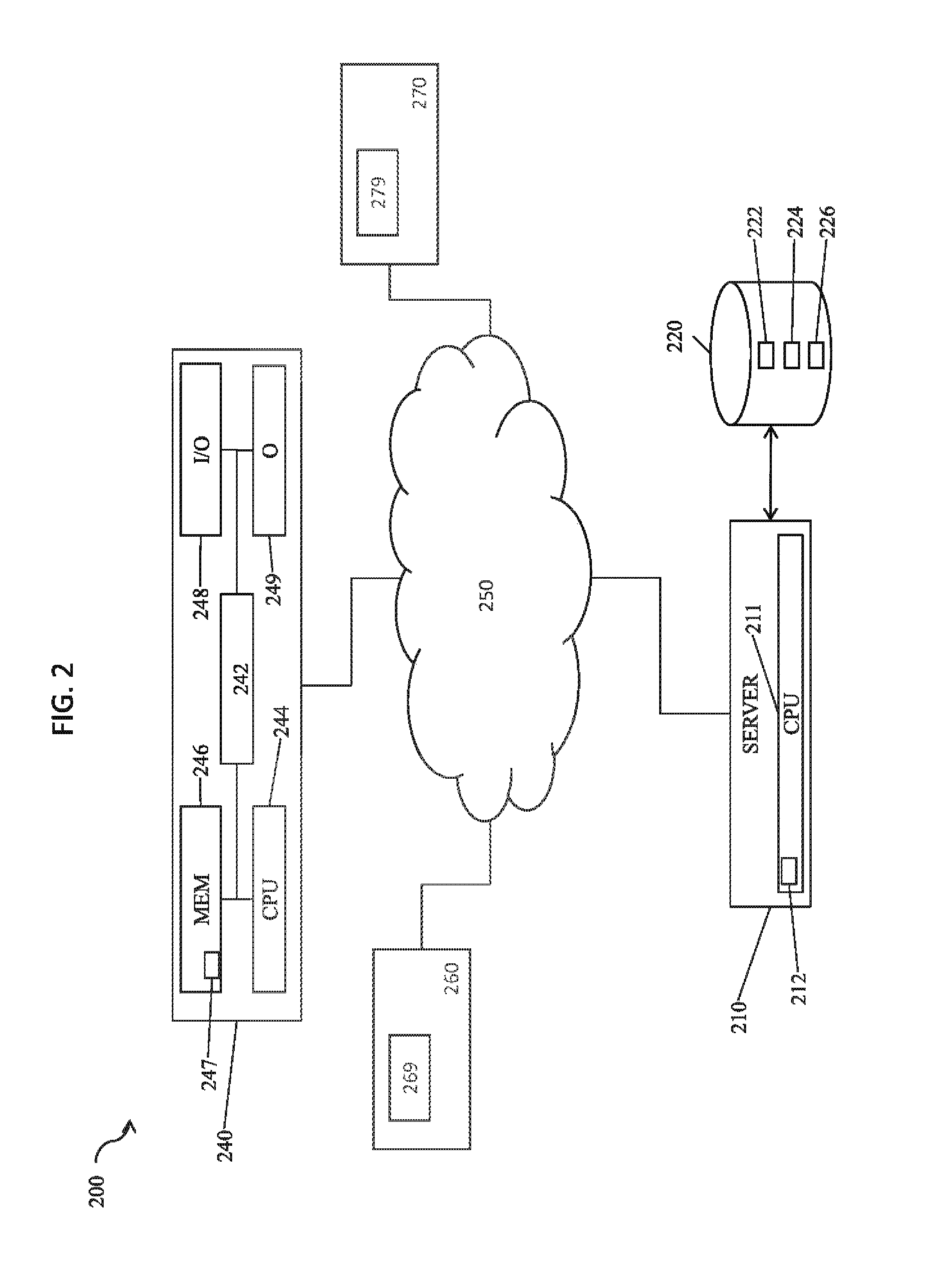However, most prior art systems and methods apply to normal
grid management,
macro (large) generation subsystems, transmission subsystems for transporting
high voltage bulk power to distributions systems where it is sent through distribution level infrastructure and voltages and finally to end customers.
Settlement for
macro energy supply,
energy storage,
energy demand, and / or curtailment as supply is known in the prior art; however, most settlement includes manual and / or non-real-time settlement including significant
estimation or modeled data where actual data is missing or not collected, and / or utilization of validation energy equivalence (VEE), and / or collected and settled over a period of time whereby actual contributions by sources / suppliers of generation are not fully known and are estimated and applied to all Market Participants in some cases a full year after a generation day.
In particular, losses associated with the transmission and distribution is spread across consumers, also referred by the industry as “loads”, by the utility
energy supply provider; where data traditionally has not available, these inaccuracies within the settlement systems of prior art place the
cost burden for inefficiencies on the
consumer of power, not the utility energy provider and / or distribution / transmission provider, which is typically the source of the losses.
In the area of managing supply of energy to the grid, detailed attachment modeling is required; also, due to the requirements that any amount of supply, even micro-scale supply, must comply with standards applicable to
full scale utilities or macro-generation supply, this compliance is difficult and expensive.
Existing electric utilities are pressed for methods to defer or eliminate the need for construction of fossil-based or macro large scale
electricity generation while dealing with the need to integrate new sources of generation such as
renewable energy sources or distributed
energy resources whose production and integration into the electric grid is problematic.
Unfortunately, these legacy systems, in the industry referred to as “Security Constrained
Economic Dispatch” (SCED) utilize complex models with incomplete information to provide both ISOs and Traditional Utilities a means to provide a generation forecast for the next
generation time period (for example, day ahead).
This “
load shifting” has the undesired effect of occasionally causing “secondary peaks” and generally requires
consumer incentives for adoption.
Furthermore integrating even these simple
load shifting assets for purposes of settlements is problematic given that these traditional technologies cannot provide the necessary geodetic, PSV, and other information necessary for these load sources to be integrated into an
Energy Management System or settled under the traditional
energy dispatch and settlement systems.
These methods remain crude and do not include real time, measurement,
verification, settlement and other attributes necessary to have their
Demand Response effects utilized for effective Operating Reserves with the exception of limited programs for “Emergency” Capacity Programs as evidenced by programs such as the Energy Reliability Council of Texas' (ERCOT's) Emergency Interruptible Load Service (EILS).
Furthermore, for effective settlement and control of mobile storage devices such as Electric Vehicles, these early “
Smart Grid” devices are not capable of meeting the requirements of Federal Energy Regulatory Commission (FERC), North American Electric Reliability Corp.
While telemetering has been used for the express purpose of reporting energy usage in real time, no cost effective techniques exist for calculating
power consumption, carbon
gas emissions,
sulfur dioxide (SO2)
gas emissions, and / or
nitrogen dioxide (NO2) emissions, and reporting the state of a particular device under the control of a two-way
positive control load management device or other combinations of load control and generator controls as previously described.
While one-way devices are generally
industry standard and relatively inexpensive to implement, the lack of a return path from the
receiver, combined with the lack of information on the actual devices connected to the
receiver, make the
system highly inefficient and largely inaccurate for measuring the actual load shed to the serving utility or compliant with
measurement and verification for presenting a balancing authority or independent system operator for operating reserves and settlements.
While initially this prior art generally describes a system that would assist utilities in managing
power load control, the prior art does not contain the unique attributes necessary to construct or implement a complete system.
In particular, this patent is deficient in the areas of security, load accuracy of a controlled device, and methods disclosing how a customer utilizing applicable hardware might set parameters, such as temperature set points, customer preference information, and customer overrides, within an intelligent
algorithm that reduces the probability of customer dissatisfaction and service cancellation or churn.
However, until recently, technologies such as smart breakers and command
relay devices were not considered for use in residential and commercial environments primarily due to high cost entry points, lack of customer demand, and the cost of power generation relative to the cost of implementing load control or their ability to meet the measurement,
telemetry,
verification requirements of the
grid operator or ISO.
Furthermore, submetering technology within the smart breaker, load control device, command
relay devices or building control systems have not existed in the prior art.
While the disclosed OPP does provide some intelligence in the
power management system, it does not determine which end devices under its control to turn-off during a power reduction event, instead relying on the host device to make such decision.
However, neither the
host processor nor the OPP determine which loads to remove in order to satisfy a power reduction command from an
electric utility, particularly when the command is issued by one of several utilities under the management of a
power management system.
Further, neither the
host processor nor the OPP tracks or accumulates power saved and / or carbon credits earned on a per customer or per utility basis for future use by the utility and / or customer.
Still further, the system of this publication lacks a reward incentive program to customers based on their participation in the
power management system.
Still further, the system described in this publication does not provide for secure communications between the
host processor and the OPP, and / or between the OPP and the end device.
As a result, the described system lacks many features that may be necessary for a commercially viable implementation.
However, the collection of customer profile information by power utilities, retail electric providers or any other
market participant that sells retail electric commodity to end customers (residential or commercial) has been limited to customer account information of gross electrical consumption and inferential information about how power is being consumed but requires customers to take their own actions.
Because power utilities, REPs, market participants typically are unable to collect
detailed data about what is happening inside a customer's home or business, including patterns of
energy consumption by device, there has been little opportunity to create extensive customer profiles.
Thus, none of the prior art systems, methods, or devices provide complete solutions for financial settlement associated with power management, including grid elements and
network management, and settlement for grid element participation in supplying and / or receiving power from the electric
power grid, including messaging over communication networks and
energy management over the electric power
grid network, wherein the grid elements are attached to the electric grid and registered therewith.
 Login to View More
Login to View More  Login to View More
Login to View More 


